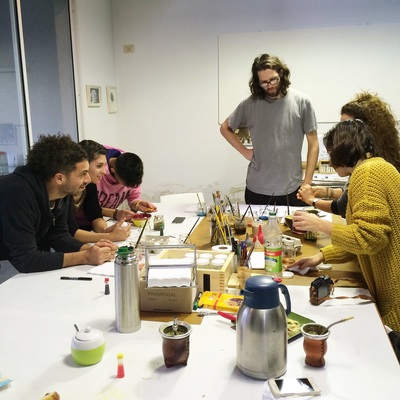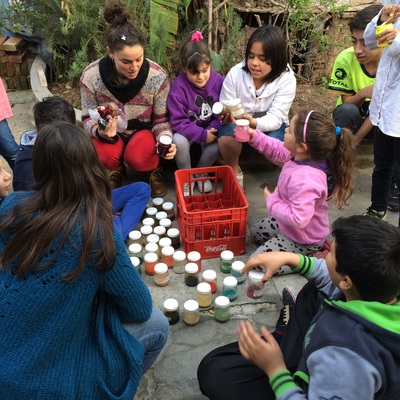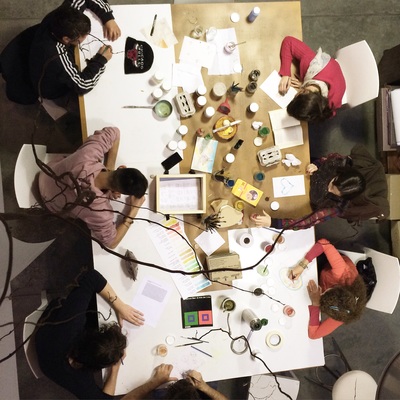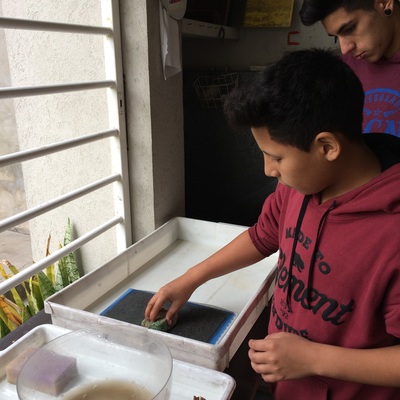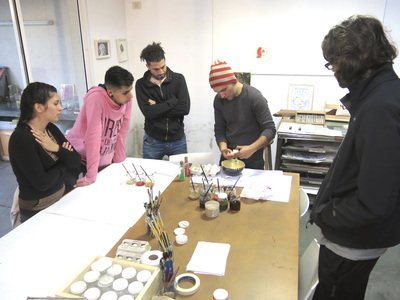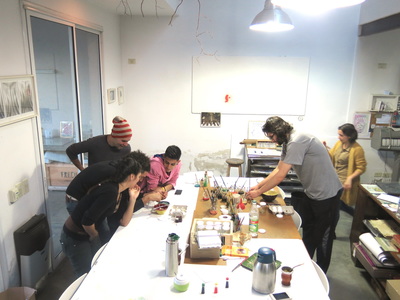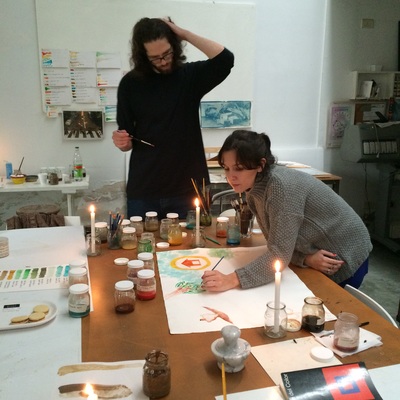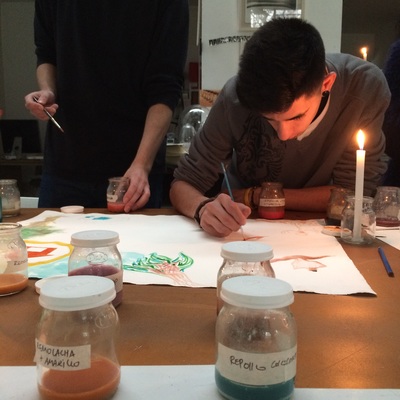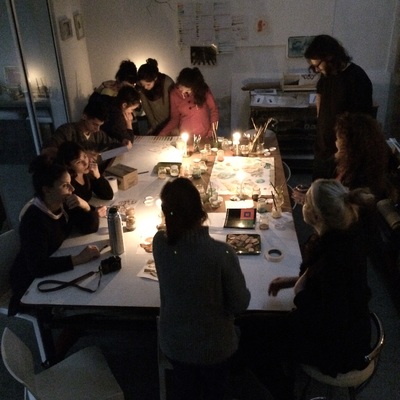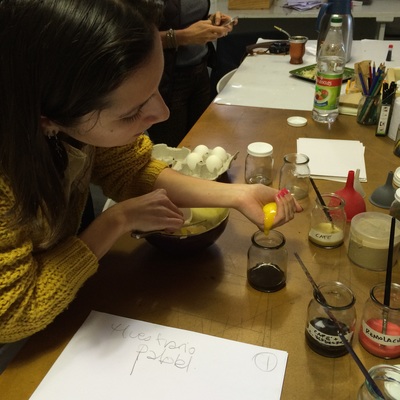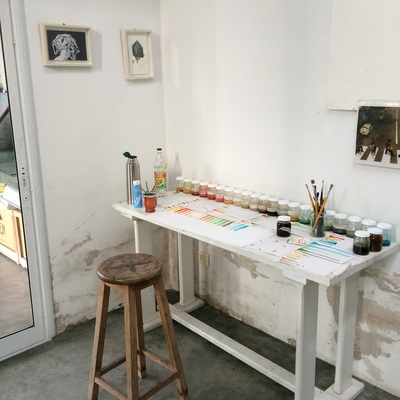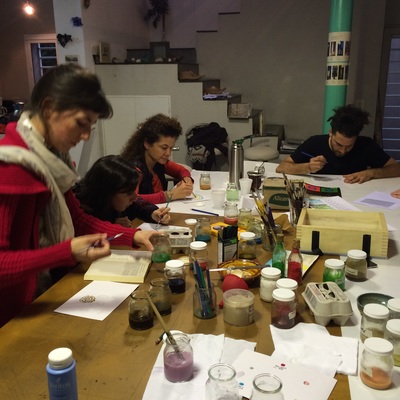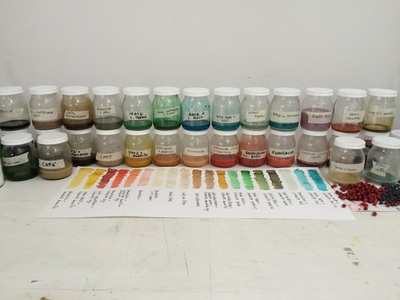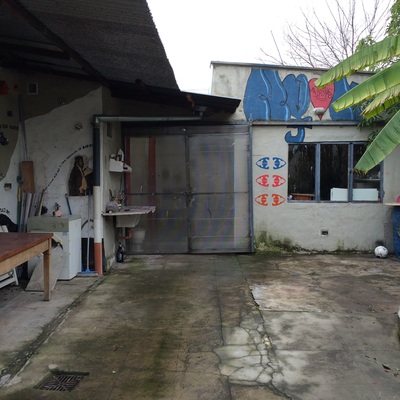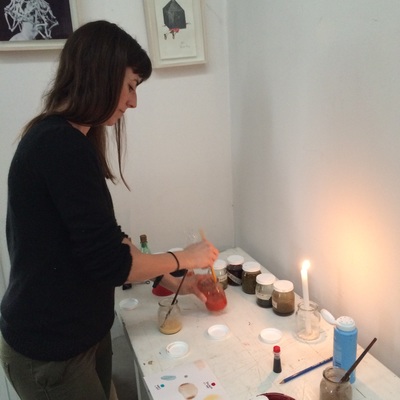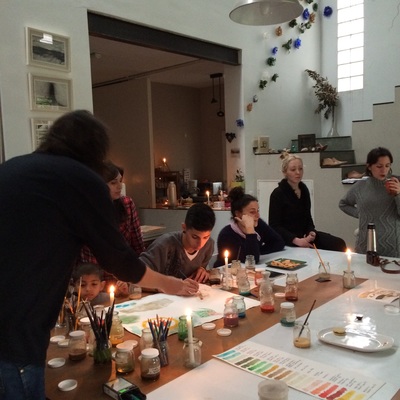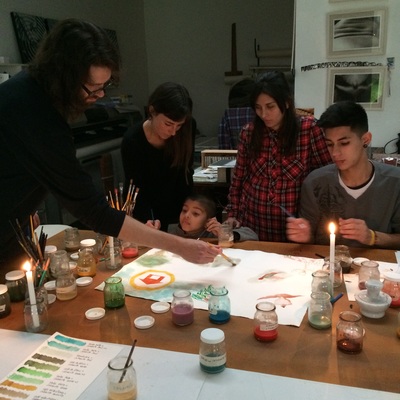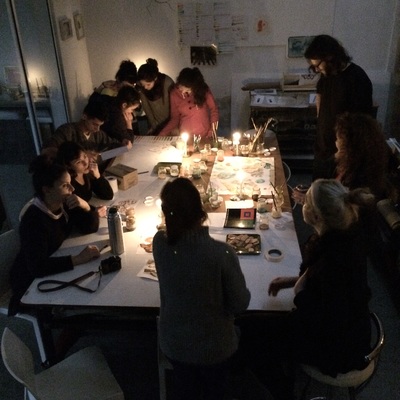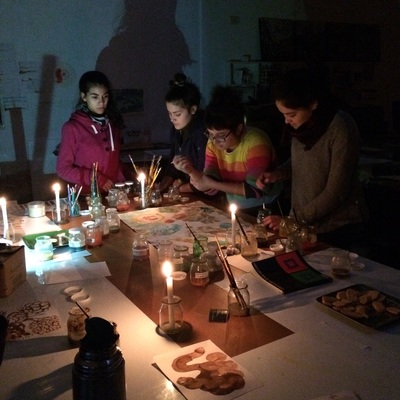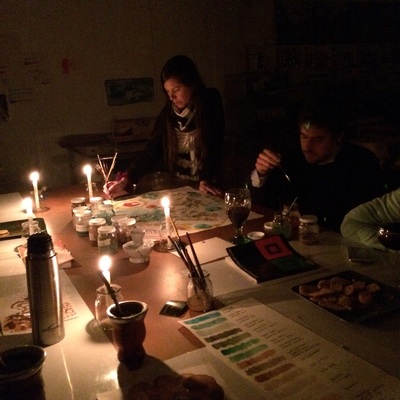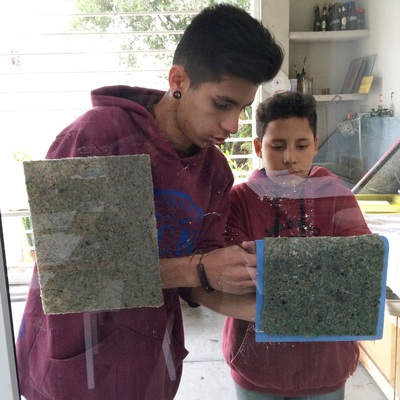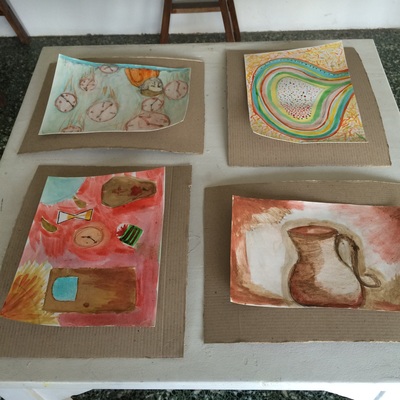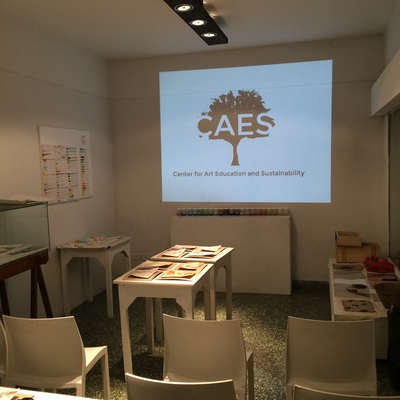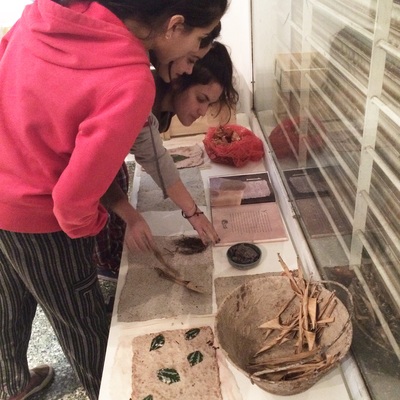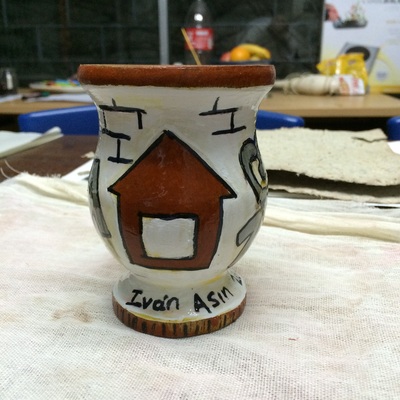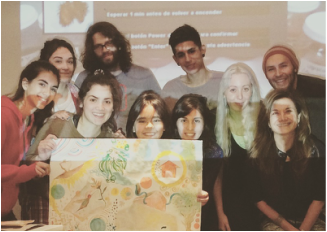|
COMMUNITY OF VILLA JARDíN
Buenos Aires, Argentina August 8-23, 2015 English:
In August of 2015 CAES carried out its first international workshop promoting self-sustainable art processes. The program was implemented in partnership with Zona Imaginaria, a residency program that promotes social integration and community engagement in the barrio Villa Jardín (San Isidro area in northern Buenos Aires) led by its founder Lucrecia Urbano.
Our time in Zona yielded remarkable situations. For example, sharing a mate with the students during the prelude to our first workshop and then extracting pigments from the same mate to make paint, served as a perfect example of the essence of what CAES aims to promote. Also valuable was the participation of Jorge, a local produce vendor on Blanco Encalada Ave. (three blocks from Zona Imaginaria) - Jorge saved us scraps such as onion skins and corn leaves, which made his store our most valuable source for fibers to make paper with. Making these sorts of relationships is an essential aspect of creating long-lasting and self-sustainable practices in art education, and it ignites the kind of community engagement we promote. Español:
El trabajo realizado en Zona Imaginaria fue el proyecto piloto e inicio de CAES (sigla que en inglés se extiende a Center for Art Education and Sustainability). Casualmente, el espíritu del programa es precisamente lo que la sigla insinúa al leerla en castellano – esta idea de caer en un lugar, explorarlo, conocer a la gente y ver que se hace. De esa forma, el propósito era llegar a Villa Jardín, caer y ver las posibilidades que el barrio y la gente propondría. Durante la realización de nuestro taller se dieron cosas notables. Por ejemplo, el compartir un mate con los participantes del taller y después estar haciendo pinturas con los pigmentos extraídos de la maceración de la misma yerba. También muy destacable fue la participación silente pero muy valorada de Jorge, el verdulero de Av. Blanco Encalada, quien tuvo la gentileza de guardarnos partes descartables de verduras para nuestros proyectos. Este último aspecto es parte clave de la integración comunal que nuestro proyecto busca provocar, transformando a gente como Jorge en un eslabón importante en lo que terminamos haciendo. Adicionalmente realizamos un encuentro puertas abiertas con artistas y la comunidad, donde todos los invitados participaron en una pintura colectiva, la que fue realizada con las pinturas naturales producidas durante el taller. Como anécdota se puede mencionar que durante dicho encuentro se cortó la luz, lo que obligó a realizar el taller y encuentro a luz de vela, lo que le dio a la noche una onda muy especial.
En Villa Jardín encontramos un grupo de personas con las que vivimos dos semanas muy especiales y donde esperamos volver algún día. |
"Obtaining a basis for our creations in our own neighborhood opens up a huge world of possibilities for creativity and inclusion, especially if it comes from our natural environment." - Pablo Landolfi, CAES' student in Buenos Aires.
|

